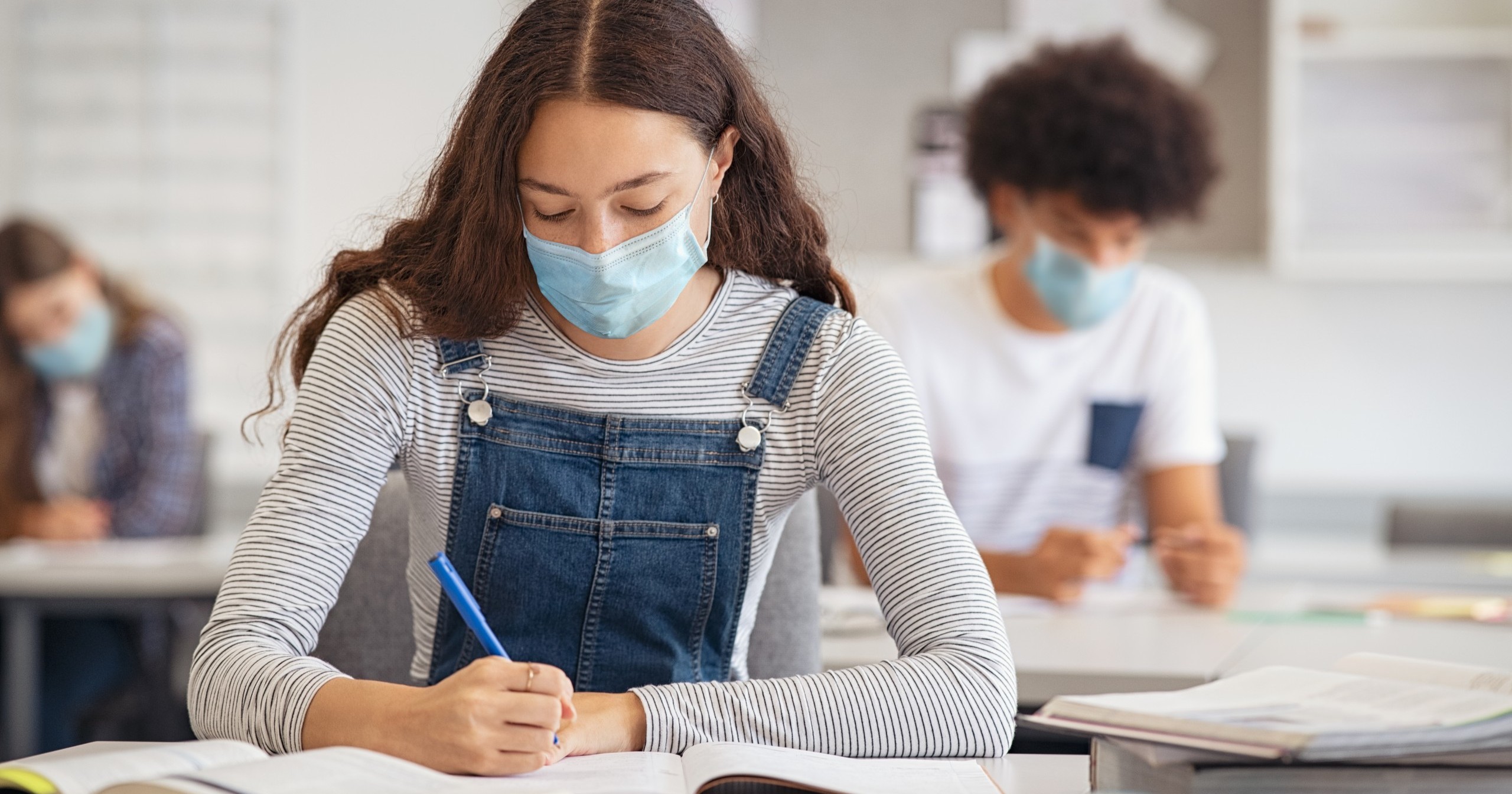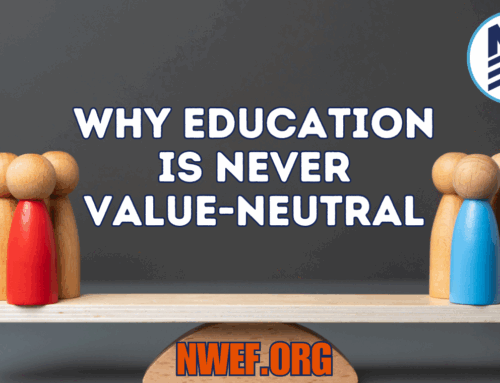
By Willie Deutsch
—
COVID resulted in significant academic upheaval for students.
The end of the 2019-2020 school year was utter chaos as schools had to change how they operated overnight. However, the 2020-2021 school year was one the state and school divisions had months to plan for.
But instead of a plan, many parents saw repeated reversals and last-minute decisions that resulted in keeping students out of the classroom for a significant portion of the school year.
During discussions over reopening schools, many people raised concerns about the negative impacts school division decisions were having on students. These concerns were often minimized or mocked. A year of lost education is not simply something that can be bounced back from. It has significant negative impacts on a student.
With the release of the state SOL scores by the VA Department of Education, it is worth examining the educational impacts on students from COVID policies by school divisions.
The Standards of Learning (SOL) is a public-school standardized testing program in the Commonwealth of Virginia developed to implement the No Child Left Behind Act. It sets forth learning and achievement expectations for core subjects for grades K-12 in Virginia’s Public Schools. They are an annual measuring tool to assess student achievement.
First, a few notes on the data used in this analysis: All numbers referenced are from the spreadsheets provided by the VA DOE. There were no SOLs in the Spring of 2020. All comparisons are based on changes between 2019 (pre-COVID) and 2021 (full school year during COVID).
It is reasonable to assume a pandemic will have a negative impact. Groups/divisions with the largest decrease show who was hurt the most. Also, the VA DOE breaks out data by nine subgroups it labels as: Asian, Black, Economically Disadvantaged, English Learners, Female, Hispanic, Male, Students with Disabilities, and White. These groups, along with data by school division, provide the details to analyze the data.
Finally, all SOL numbers are pass rates, and we are talking about decline in pass rates. Just passing doesn’t necessarily mean someone is set up for success.
Before looking at the 2021 data, let’s look at the pre-COVID data. Below is the SOL data from 2019, the last year before COVID. In the slope of the line, you can see the gap in achievement between different subgroups.

The subgroups on the right are groups struggling most to succeed academically. During 2021, you would expect the state would work with school divisions to make sure these groups didn’t fall further behind.
Statewide Analysis By Subgroup
With that expectation, let’s examine the 2021 statistics.
Statewide we saw the following decline in pass rates across all students from 2019 to 2021:
- English/Reading: -11.54%
- Mathematics: -34.15%
- Science: -27.16%
These numbers represent the average decline, not the worst of it. English Language Learners followed by Black and Hispanics followed by Economically Disadvantaged were the four groups most hurt academically. Sadly, English Language Learners performed roughly 2.5x worse than the average.
The following chart shows the percent decline by subgroup.

As we look at the 2021 data, what we sadly see in the data is that students who most needed support were the ones hurt the most.
The students who were already performing the worst saw the largest decline in educational outcomes, while the best-performing students achieved the closest to pre-COVID numbers. This means that the gap between student groups increased.
In educational circles, there is a lot of focus on closing the achievement gap. As a result of policies implemented under COVID, the achievement gap widened. Students who were having the hardest time succeeding saw the largest decline in academic achievement.
Simply looking at the difference between white and black students, education leaders saw black students decline at nearly double the percentage as their white peers. Supports were not put in place to help students who needed it. Some subgroups saw nearly a 70% decline in test results. This isn’t a slight dip in the data. This is a lost academic year for thousands of students.
The state of Virginia had months to plan, and an entire school year to improve on an educational plan under COVID. What they developed was a system that disproportionately hurt students who most needed academic support.
The chart of 2021 statewide pass rates shows a much steeper decline. This steep decline is the measurable increase in the achievement gap created by COVID educational policies. Instead of helping all students move forward, the state results show that the lowest-performing students were left further behind.

If you want to see the percentages, here’s exactly how much each group’s pass rate deteriorated in 2021:
English: Reading saw the following percent decline by subgroup:
- English Learners: -31.43%
- Hispanic: -18.18%
- Black: -16.92%
- Economically Disadvantaged: -16.92%
- Students with Disabilities: -14.89%
- All Students: -11.54%
- Male: -10.67%
- Female: -10.00%
- White: -8.24%
- Asian: -4.49%
Mathematics saw the following percent decline by subgroup:
- English Learners: -64.41%
- Black: -51.43%
- Hispanic: -48.65%
- Economically Disadvantaged: -48.61%
- Students with Disabilities: -43.64%
- Female: -35.71%
- All Students: -34.15%
- Male: -32.50%
- White: -27.27%
- Asian: -15.96%
Science saw the following percent decline by subgroup:
- English Learners: -68.42%
- Black: -41.79%
- Economically Disadvantaged: -41.18%
- Hispanic: -40.00%
- Students with Disabilities: -39.22%
- All Students: -27.16%
- Female: -27.16%
- Male: -25.93%
- White: -21.35%
- Asian: -13.98%
Statewide Analysis By School Division
The analysis by school division is even more alarming and saddening.
One school division saw the largest decline across all three subjects. Other school divisions can’t compare to how badly this school division cratered.

Students in the Department of Juvenile Justice are students who desperately need to be set up for a future. But in the face of COVID, these students—who the State of Virginia is responsible for—saw declines in pass rates ranging from 61% to 87%. All the way down to a 7% pass rate in Mathematics.
Beyond the Department of Juvenile Justice, three school divisions made the list of “top ten decreases in pass rate” in all three subjects: Brunswick County, Hopewell City, and Martinsville City.
Whether examined by subgroup, or by school division, the same thread is hard to miss. Students that needed support most, saw the largest drops in achievement. Whether examined by subgroup, or by school division, the same thread is hard to miss. Students that needed support most, saw the largest drops in achievement.
With months to plan, Virginia implemented a system that widened the achievement gap and hurt underperforming students. A year of lost education is not simply something that can be bounced back from. It has significant negative impacts on a student.
What can parents do in response to this information?
Well, you’ve already taken the first step: you’re informed. Whether you’re from Virginia or another state, using the data published on your state’s Department of Education website can help you be “armed” with information so that you can encourage appropriate steps in your next local school board meeting. (Want more information about your state’s school system? Visit our Know Your State System chart.)
Attending your local school board meetings and holding the board accountable to make better decisions as the battle with COVID-19 continues is the best way you can help those who need academic intervention.
—
Note from the Editor: We thank all our contributors for their insights and expertise. However, the views of guest authors or interviewees are not necessarily those of Noah Webster Educational Foundation.
About the Author:
Willie Deutsch was elected to the Prince William County School Board in 2015 and served for four years. He was the youngest elected official in northern Virginia when he was elected at the age of 25. He worked hard to engage the public and keep them informed, working as a budget hawk to push money into the classroom and save money through more efficient spending.






[…] Who Was Hurt the Most by Virginia’s Education Decisions During COVID? […]
[…] Who Was Hurt the Most by Virginia’s Education Decisions During COVID? […]